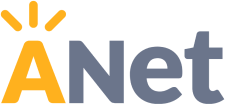by Sarah Tierney and Tracey Waters
We’ve all been there: Maybe it’s Sunday night; maybe you have a few precious minutes of planning time. You’re scrambling to prepare a lesson and you think, why reinvent the wheel? Let’s check the interwebs. You google your topic and…28,000,000 results pop up. How on Earth do you decide what might be worth using with your students?
It’s not uncommon for teachers to huddle in front of computers, sifting through the wild west of free education resources available on the internet. A recent report from the RAND Corporation revealed 99 percent of teachers in this country use "materials I developed and/or selected myself" as part of their literacy instruction.
And this is no small task. Almost half of teachers reported spending four or more hours a week searching for materials, with Google and Pinterest the most frequently consulted websites. Frustratingly, most of those hours are probably wasted trying to distinguish a few educationally sound resources amongst the clutter. And we know that in addition to teacher effectiveness, the quality of the instructional materials they employ is one of the most critical factors in student achievement.
“We’re seeing a need for concrete, ready-to-use materials that teachers can take and run with, but that also have a long-lasting impact on student learning,” explain Joey Hawkins and Diana Leddy of the Vermont Writing Collaborative. “Open source materials run the range and it can be a real challenge for teachers to navigate everything that’s out there.” They’re right. There are a lot of education resources out there, free for the taking—the challenge is figuring out what’s worthy of precious instructional time.
Clearly, there’s an urgent need to empower teachers and leaders to make good decisions about the instructional materials they choose. In response, we at ANet have developed a three-step system of guidance that will facilitate the selection process.
We’ll explore these three steps, along with a case study, through a three-part blog series.
1. Select high-quality materials
In this post we’ll focus on how to know if the open education resources you are using are rigorous and standards-aligned.
The IMET rubric aims to help educators identify and evaluate the quality of an entire curricula while the EQUIP rubric was designed to help leaders and teachers evaluate the quality of lessons and units. The following markers of quality and alignment were developed with these two rubrics in mind.
What should I look for to know that materials are high-quality?
-
Texts are authentic and complex, and include reading, writing, and discussion questions that are based on the text and scaffold toward the key understanding(s) of the text.
-
Materials include scaffolded, text-dependent questions and writing tasks that are aligned to grade-level standards, not anchor-level standards.
-
Texts and questions push students to build world knowledge and don’t focus solely on discrete literacy skills in isolation from the text.
-
Materials provide multiple opportunities for students to express their thinking through a variety of question types and tasks.
- Learning activities place the majority of “heavy lifting” on students, rather than teachers.
Once you’ve found a high-quality resource, you’ll want to think about your plan for internalizing the instructional materials. We’ll focus on how to do this in the next post, including guidance around how to strategically adapt resources to fill gaps in curricula or support individual student needs. In our final post, we’ll share two teachers’ experiences using materials from the Vermont Writing Collaborative with their third graders.
Resources
Below are several high-quality and CCSS-aligned free literacy education resources. Explore these materials with the markers of quality and the needs of your students in mind.
